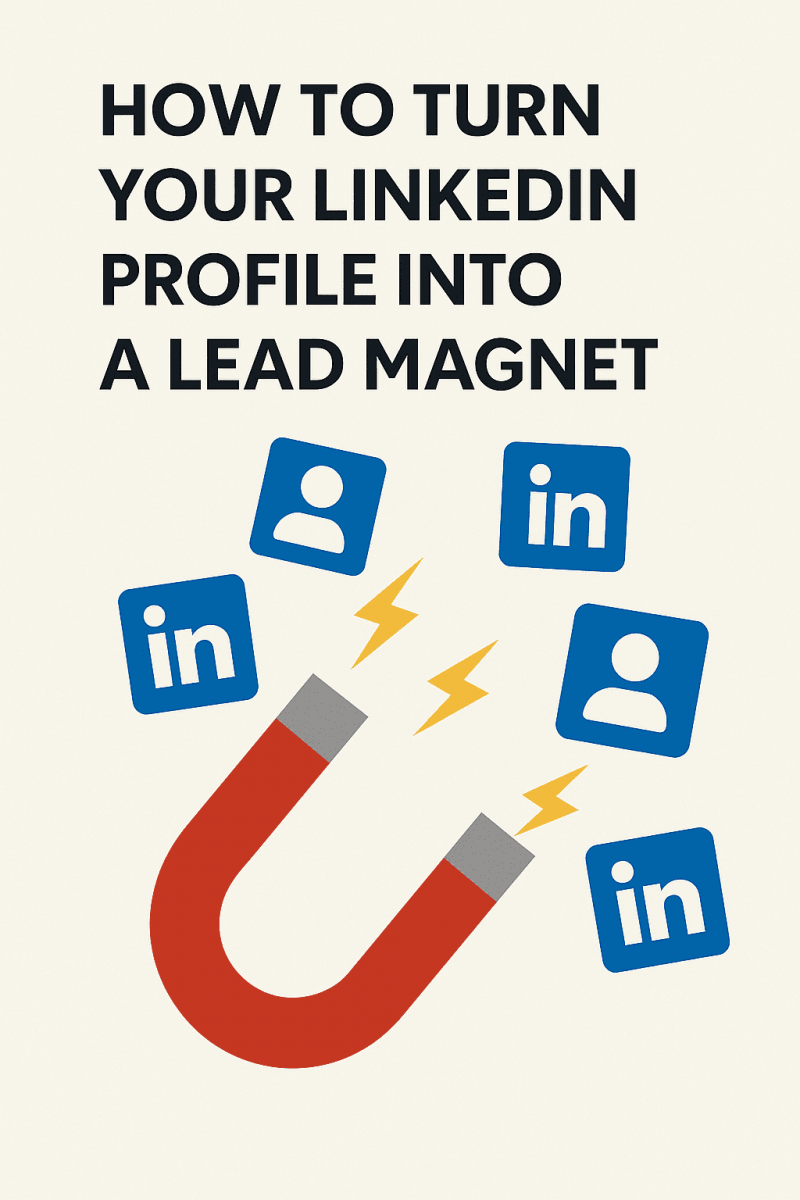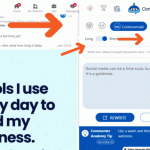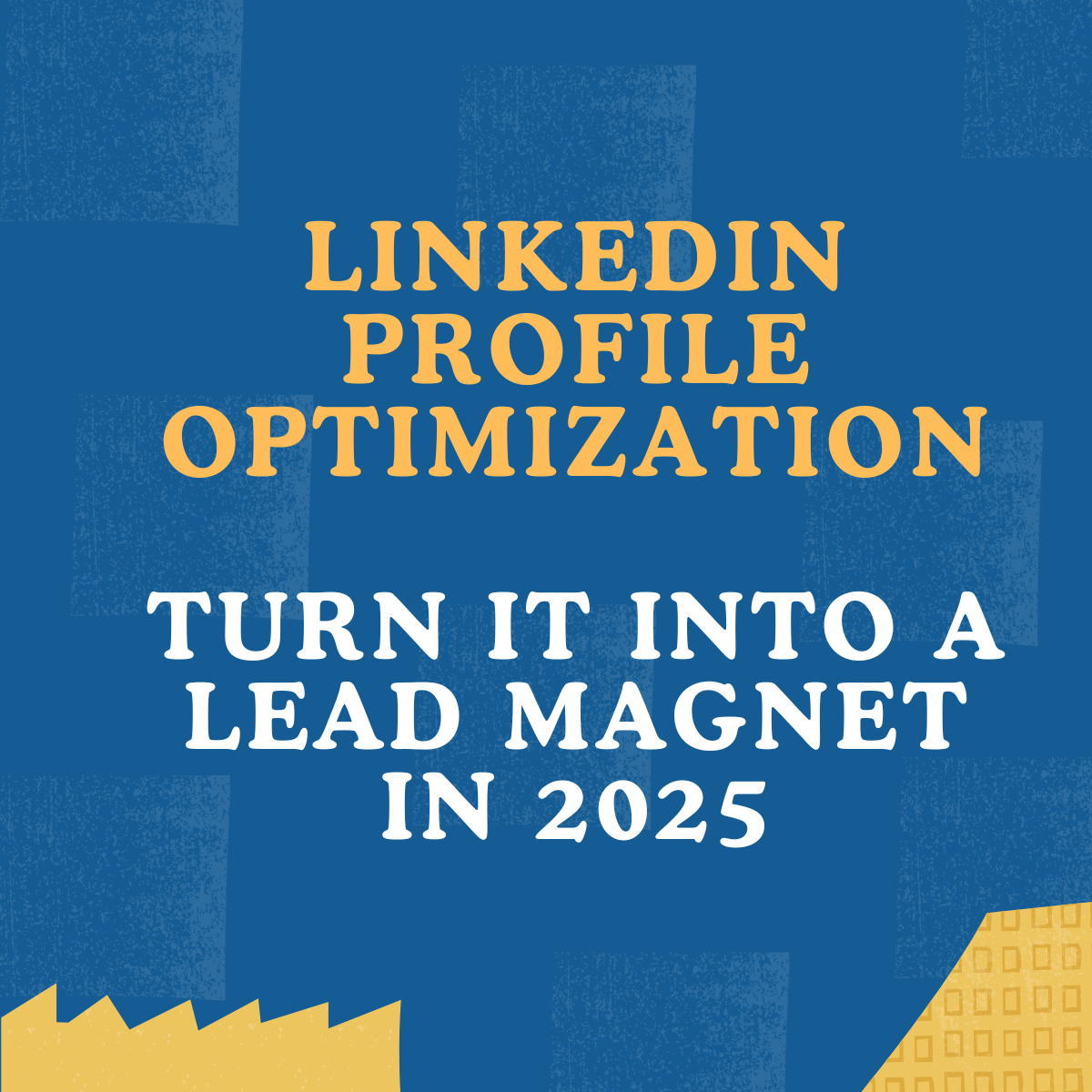
How to Turn Your LinkedIn Profile Into a Lead Magnet
In today’s digital world, LinkedIn is more than just a place to connect with colleagues or hunt for jobs. It’s a powerful platform for personal branding and lead generation. With over 700 million users worldwide, LinkedIn offers a unique opportunity to showcase your expertise, engage with prospects, and convert connections into clients. But how can you make your LinkedIn profile stand out and act as a lead magnet? Let’s explore effective strategies for optimizing your LinkedIn profile for sales and turning it into a conversion-focused tool.
Why LinkedIn Profile Optimization Matters
Your LinkedIn profile is your digital business card. It’s often the first impression potential clients or employers have of you, so it needs to be polished and professional. LinkedIn profile optimization involves enhancing your profile to increase visibility, attract your target audience, and encourage engagement. Here’s why it’s crucial:
Increased Visibility and Discoverability
An optimized LinkedIn profile is more likely to appear in search results, increasing the chances of being discovered by the right people. This means using strategic keywords that align with your industry and the specific solutions you offer. Remember, LinkedIn’s algorithm favors profiles that are both complete and regularly updated. Regularly refreshing your profile with relevant content and keywords can keep you top of mind for your target audience. Additionally, joining industry-specific groups and participating in discussions can further enhance your visibility.
Building Authority and Trust
A well-crafted LinkedIn profile establishes your authority in your industry and builds trust with potential leads. Highlighting your professional journey with detailed experiences and endorsements from colleagues can fortify your credibility. Including testimonials or recommendations from clients or peers adds a layer of authenticity to your profile. Moreover, sharing content that demonstrates your expertise or insights into industry trends can position you as a thought leader. This trust is crucial for converting profile visitors into serious leads.
Encouraging Engagement and Interaction
An engaging LinkedIn profile encourages visitors to connect, comment, and inquire about your services. Use a conversational tone and direct calls to action to invite engagement. Make sure your profile is not just about your achievements but also about how you can solve your prospects’ problems. Interactive content, like polls or questions, can also stimulate conversation and engagement. Remember, engagement is not just about receiving; actively interact with your audience to foster a community around your brand.
Key Elements of a Lead-Generating LinkedIn Profile
To convert your LinkedIn profile into a lead-generating machine, it must be meticulously crafted to attract and retain attention. Here are some essential elements to focus on:
Crafting a Compelling LinkedIn Headline
Your LinkedIn headline is one of the first things people notice. Make it count by clearly stating who you are, what you do, and how you can help. Use keywords related to your industry to improve searchability. For example, instead of “Sales Manager,” try “B2B Sales Manager | Helping Companies Increase Revenue through Strategic Partnerships.” A compelling headline not only captures attention but also sets the expectation of what your profile holds. Experiment with different versions of your headline to see which resonates most with your audience.
Writing an Engaging LinkedIn Summary
Your LinkedIn summary is your elevator pitch. It’s an opportunity to showcase your personality, highlight your accomplishments, and explain how you add value. Write in the first person to make it more personal and engaging. Focus on your unique selling proposition (USP) and include a call to action (CTA) encouraging viewers to connect or visit your website. Break your summary into sections with headlines for easier readability. Incorporate storytelling elements to make it more relatable and memorable to those who read it.
Highlighting Relevant Work Experience
When listing your work experience, emphasize roles and achievements that align with your current goals. Use bullet points to make your accomplishments easy to read. Quantify your achievements with numbers and statistics to provide concrete evidence of your success. Describe not only what you did but also the impact it had on your organization or clients. Incorporate specific, measurable outcomes to demonstrate your value. Ensure the language you use aligns with the needs and challenges of your target audience.
Leveraging LinkedIn Skills and Endorsements
Skills and endorsements play a significant role in LinkedIn’s search algorithm. List relevant skills that reflect your expertise and encourage connections to endorse you. Endorsements from colleagues and clients add credibility and boost your profile’s ranking. Regularly update your skills to reflect your evolving professional journey. Actively endorse others, as this can encourage reciprocation and strengthen professional relationships. Consider seeking endorsements from individuals who can genuinely speak to your skills and contributions.
Utilizing Visual Content to Enhance Your LinkedIn Profile
Visual content can make your LinkedIn profile more engaging and memorable. Use a professional profile picture and a custom background image that reflects your brand. Consider adding media such as videos, presentations, or infographics to your experience and summary sections to showcase your work. Visuals should complement your written content and provide additional insights into your expertise. Videos, in particular, can humanize your profile and give visitors a deeper connection to who you are. Consistency in your visual branding across platforms will create a cohesive image of your professional persona.
Building a Personal Brand on LinkedIn
Building a personal brand on LinkedIn requires a consistent and strategic approach. Your brand is the perception others have of you in the professional sphere, and LinkedIn is a powerful tool to shape that perception.
Consistency Across Platforms
Consistency is key when building a personal brand. Use the same profile picture, headline, and tone of voice across all platforms. Align your LinkedIn content with your brand’s message and values. Ensure that the way you present yourself on LinkedIn mirrors your professional presence elsewhere, whether in person or online. This consistency builds a reliable and recognizable brand image. Moreover, audit your LinkedIn profile regularly to ensure all elements align with your current brand strategy.
Sharing Valuable Content Regularly
Regularly posting valuable content establishes you as a thought leader in your industry. Share articles, insights, and tips that resonate with your target audience. Use LinkedIn’s publishing platform to write longer-form articles that dive deeper into industry topics. Curate content from reputable sources to share with your network, adding your insights to spark discussion. Engage with current trends and news to stay relevant and offer timely perspectives. Remember, the content you share should reflect your expertise and the interests of your audience.
Engaging Actively with Your Network
Engagement is crucial for building relationships and expanding your reach. Respond to comments, participate in discussions, and interact with your connections’ content. The more active you are, the more visible you become to potential leads. Initiate conversations by commenting on posts or sharing insights on trending topics. Building relationships through authentic engagement often leads to opportunities for collaboration or business. Remember, meaningful engagement is not just about increasing visibility but also about building trust and rapport with your network.
Using LinkedIn Groups to Expand Your Reach
LinkedIn Groups are a great way to connect with like-minded professionals and potential clients. Join groups related to your industry and actively participate in discussions. Share your expertise and provide value to group members to build your reputation. By contributing valuable insights, you can establish yourself as a knowledgeable resource within these communities. Groups also offer opportunities to network with individuals who share your professional interests. Be respectful and constructive in your contributions to foster a positive reputation within the group.
LinkedIn Tools for Lead Generation
LinkedIn offers powerful features for lead generation that can significantly enhance your sales and marketing efforts. By strategically utilizing these tools, you can effectively identify, connect with, and convert potential leads.
Advanced Search and Filters
LinkedIn’s advanced search feature allows you to find and connect with potential leads. Filter your search by location, industry, and job title to identify prospects that align with your target audience. Personalize your connection requests to increase the likelihood of acceptance. Use Boolean search techniques to refine your search results further. Save searches and create alerts to stay informed about new prospects fitting your criteria. This proactive approach ensures you consistently have a pipeline of potential leads.
Personalizing Connection Requests
When reaching out to potential leads, personalize your connection requests. Mention common connections, shared interests, or recent achievements to establish rapport. A personalized message shows that you’re genuinely interested in connecting. Take the time to research the individual’s profile to tailor your message appropriately. Highlight how the connection can be mutually beneficial to encourage acceptance. Remember, personalization is key to building authentic relationships from the outset.
Nurturing Leads and Building Relationships
Once connected, nurture relationships by sharing relevant content and insights. Keep your leads engaged with personalized messages and updates. Use LinkedIn’s messaging feature to stay in touch and provide value over time. Regularly check in with your connections, offering assistance or resources that might be beneficial. Share successes or case studies that demonstrate the impact of your work. Remember, nurturing is a continuous process that builds trust and positions you as a valuable contact.
Using LinkedIn Analytics to Measure Success
LinkedIn analytics offer insights into how your profile is performing. Monitor profile views, search appearances, and engagement metrics to understand what’s working and where there’s room for improvement. Use this data to refine your strategy and optimize your profile further. Analyze which types of content generate the most engagement and adjust your content strategy accordingly. Set goals based on your analytics to measure progress and drive continuous improvement. Regularly reviewing analytics ensures your efforts align with your lead generation objectives.
Conclusion: Turning Your LinkedIn Profile Into a Lead Magnet
Turning your LinkedIn profile into a lead magnet requires a strategic approach to profile optimization, personal branding, and engagement. By crafting a compelling profile, sharing valuable content, and actively engaging with your network, you can attract and convert potential leads into clients. Embrace these strategies, and watch your LinkedIn profile become a powerful tool for generating new business opportunities. Remember, LinkedIn is a dynamic platform, so stay adaptable and continually seek ways to enhance your presence and effectiveness.
Want to stay ahead of the competition and tap into LinkedIn’s most overlooked lead-gen features? 📈
👉 Discover practical, proven strategies to attract high-quality leads — only on our blog.



